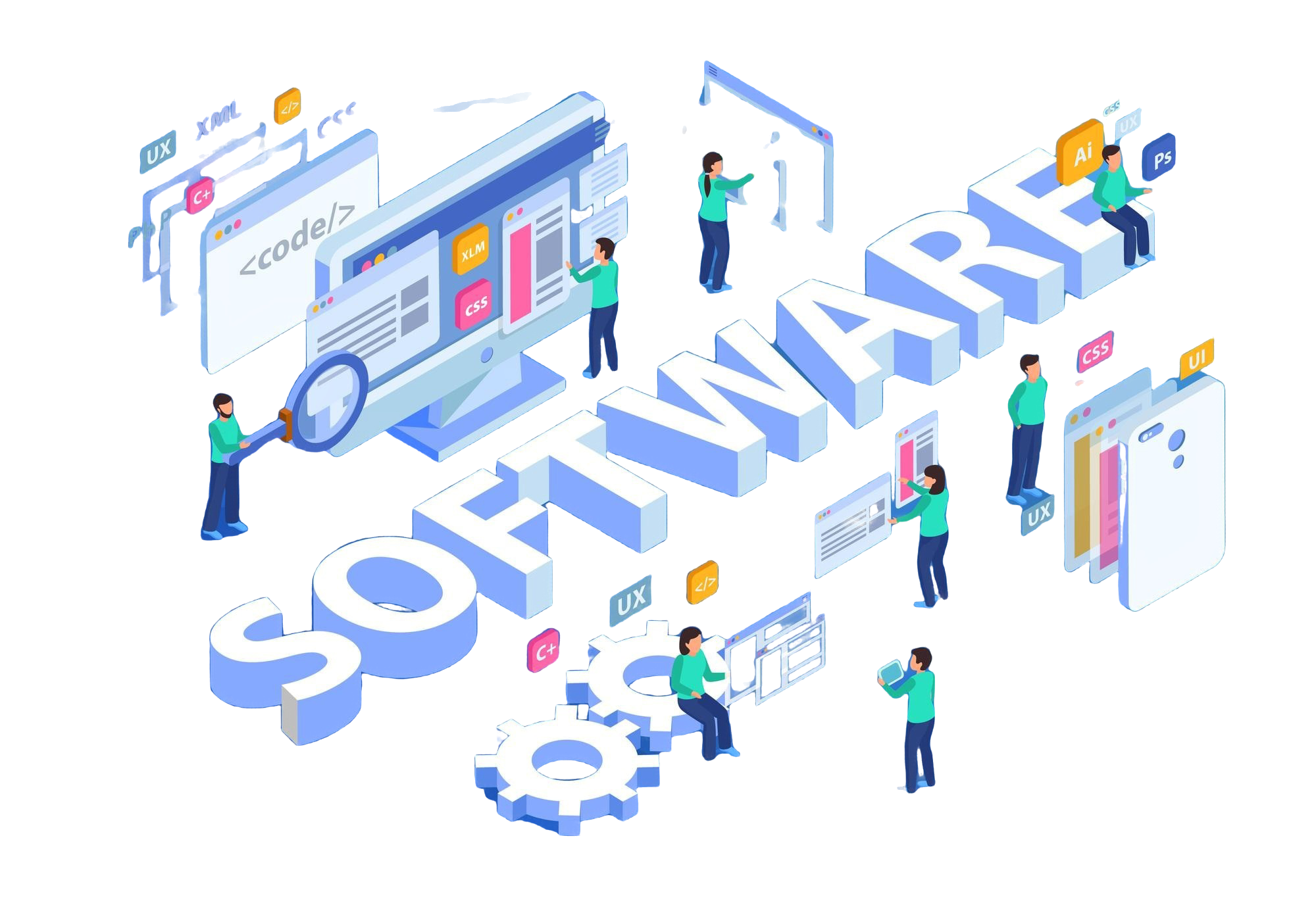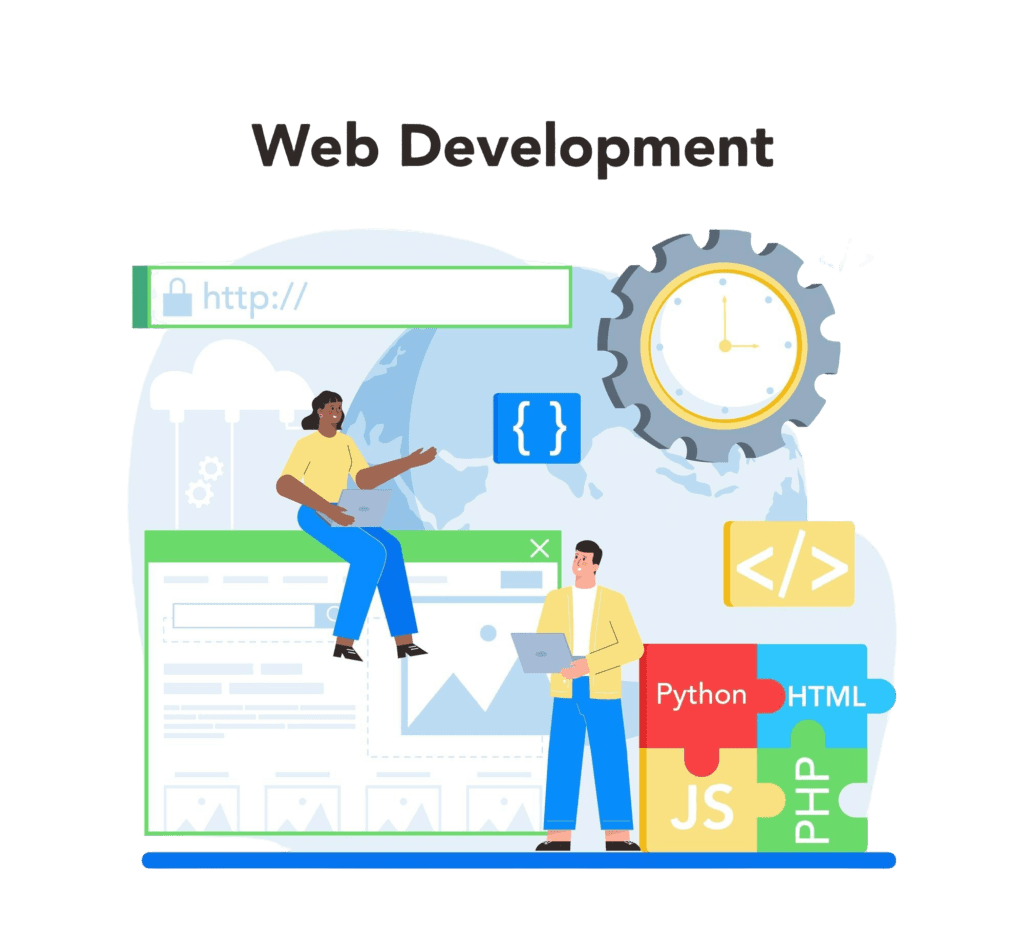
Full-stack web development is a dynamic field that combines front-end and back-end development into a cohesive, high-performing web application. With the variety of tools and technologies available today, selecting the ideal stack for web application development can be a daunting task. This decision significantly impacts the speed, scalability, and functionality of your application. Here, we’ll explore how to select the right technology stack and key considerations in working with a reliable web development company or agency.
What is Full-Stack Web Development?
Full-stack web development encompasses all layers of a web application, from client-side (front-end) to server-side (back-end) components. It requires expertise in both areas, allowing developers to build holistic solutions. The flexibility of full-stack web development empowers developers to manage a project’s entire architecture, from its design to its deployment.
In today’s market, companies often rely on full-stack development due to its ability to streamline communication, reduce project costs, and accelerate development times. When choosing the technology stack, consulting with a specialized web development agency can be invaluable for selecting optimal tools.
Key Components of Full-Stack Web Development
Understanding the essentials of full-stack web development will provide a foundation for making technology stack choices. These key components generally fall under:
- Front-End Development: Front-end technologies are responsible for the user interface (UI) and user experience (UX). Key technologies include HTML, CSS, JavaScript, and frameworks such as React, Angular, and Vue.js. These tools are crucial for responsive web application development.
- Back-End Development: The back-end manages the server, database, and application logic. Popular back-end technologies include Node.js, Python, Ruby, Java, and PHP. These languages often pair with databases such as MongoDB, PostgreSQL, or MySQL to store and manage application data effectively.
- Database: A vital component for any web application, databases store, retrieve, and manage data efficiently. Relational databases like MySQL or PostgreSQL are popular choices, while NoSQL options like MongoDB are also widely used, depending on the application’s data needs.
- DevOps and Server Management: Successful full-stack web development involves continuous integration and deployment (CI/CD), monitoring, and server management. Tools like Docker, Jenkins, and Kubernetes are popular for optimizing development and ensuring smooth operation in production environments.
- API Management: APIs serve as the bridge between the client and server, enabling data exchange. RESTful APIs and GraphQL are popular methods for structuring this communication.
Selecting the right tools in each of these areas can significantly impact the overall efficiency and functionality of your project. Working with a skilled web development agency can make this process smoother, helping you select technologies that fit your needs.
Popular Technology Stacks in Full-Stack Web Development
Choosing the right stack for full-stack web development often depends on the type of application you want to build and the specific requirements of your business. Here are some of the most commonly used technology stacks in the industry:
1. MEAN Stack
- Technologies: MongoDB, Express.js, Angular, Node.js
- Benefits: The MEAN stack is highly popular for developing scalable web applications. It uses a single language (JavaScript) across the entire application, which simplifies the development process. MongoDB’s NoSQL structure makes it ideal for handling large amounts of unstructured data.
2. MERN Stack
- Technologies: MongoDB, Express.js, React, Node.js
- Benefits: This stack is similar to MEAN but replaces Angular with React, which many developers prefer for its flexibility and large community. MERN is ideal for applications that require dynamic and responsive user interfaces.
3. LAMP Stack
- Technologies: Linux, Apache, MySQL, PHP
- Benefits: The LAMP stack is a traditional web application development stack and remains popular for its stability and security. It’s an excellent choice for applications where reliability is paramount, such as content-driven sites.
4. Django Stack
- Technologies: Django, Python, PostgreSQL
- Benefits: For applications requiring rapid development, Django (a Python-based framework) is an excellent choice. Its built-in features and strong scalability make it popular among a web development company specializing in data-heavy applications.
5. Ruby on Rails Stack
- Technologies: Ruby, Rails, PostgreSQL
- Benefits: Known for its developer-friendly structure, the Ruby on Rails stack accelerates the development process with convention over configuration principles. It’s ideal for startups looking to launch web applications quickly.
Selecting the stack depends not only on the project requirements but also on factors like team expertise, time constraints, and budget. A skilled web development agency can analyze these factors to recommend the best solution for your project.

Factors to Consider When Choosing a Technology Stack
When selecting a stack for full-stack web development, consider the following factors:
- Project Requirements: Define whether you need a real-time web application, a content-rich website, or an eCommerce solution. Each has different stack requirements.
- Scalability Needs: Evaluate the long-term goals for your web application. Some stacks are better suited for handling high levels of traffic and data.
- Community Support and Documentation: Using popular and well-documented stacks ensures that you’ll have access to libraries, tools, and community support, which can save time and effort in the long run.
- Cost Efficiency: While open-source technologies often reduce costs, some stacks may require additional investment in specialized developers or proprietary tools.
- Developer Expertise: Your development team’s expertise can play a significant role in selecting a stack. For instance, if your team is proficient in JavaScript, choosing MEAN or MERN may be beneficial.
Consulting with a knowledgeable web development company can streamline this process, as they can provide insights based on experience and industry trends, helping you choose the optimal stack.
Benefits of Working with a Web Development Company
Partnering with a web development agency brings expertise, resources, and scalability to your project. Here’s why working with a web development company can be advantageous for selecting and implementing your technology stack:
- Expert Consultation: An experienced web development agency can provide tailored insights, recommend best practices, and guide you in choosing technologies aligned with your goals.
- Efficient Project Management: Web development agencies often have robust project management systems in place, ensuring timely project delivery and minimizing roadblocks.
- Resource Access: Development agencies provide access to specialized tools, infrastructure, and expertise that may be costly to acquire independently.
- Maintenance and Support: Ongoing maintenance is critical for the success of any application. A web development company can offer post-launch support, ensuring your application remains functional and up-to-date.
Conclusion: Choosing the Right Stack for Full-Stack Web Development Success
Choosing the right technology stack for full-stack web development requires careful consideration of project goals, scalability, and budget constraints. By partnering with a reputable web development agency, you can leverage their expertise to navigate these choices and implement a technology stack that optimizes performance and enhances user experience.
As web application development continues to evolve, selecting the best tools and frameworks remains essential for delivering secure, efficient, and scalable applications. By understanding the fundamentals of full-stack web development and utilizing a well-chosen technology stack, you can position your project for lasting success.


